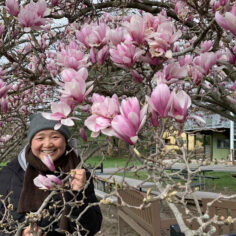Sister Hoa Nghiêm offers insights from exploring Thầy’s lifetime of peace activism.
By Sister Chân Hoa Nghiêm on
Following in Thầy’s footsteps
Last autumn, Blue Cliff Monastery welcomed two guests from Vietnam, Mr. Thanh and Mr. Huy. Mr. Thanh, the director of a documentary about our teacher, Zen Master Thích Nhất Hạnh (or Thầy), had come to learn more about Thầy’s life in the 1960s,
Sister Hoa Nghiêm offers insights from exploring Thầy’s lifetime of peace activism.
By Sister Chân Hoa Nghiêm on
Following in Thầy’s footsteps
Last autumn, Blue Cliff Monastery welcomed two guests from Vietnam, Mr. Thanh and Mr. Huy. Mr. Thanh, the director of a documentary about our teacher, Zen Master Thích Nhất Hạnh (or Thầy), had come to learn more about Thầy’s life in the 1960s, the crucial period when he came to the United States to pursue a Master of Arts degree and to advocate for peace in Vietnam.
Together, monastics and the documentary film crew visited Princeton University, where Thầy had studied. Dr. Brian Shetler gave us a guided tour of the library, which displayed a wide variety of materials both by and related to Thầy, and pointed out Brown Hall, where Thầy had resided.
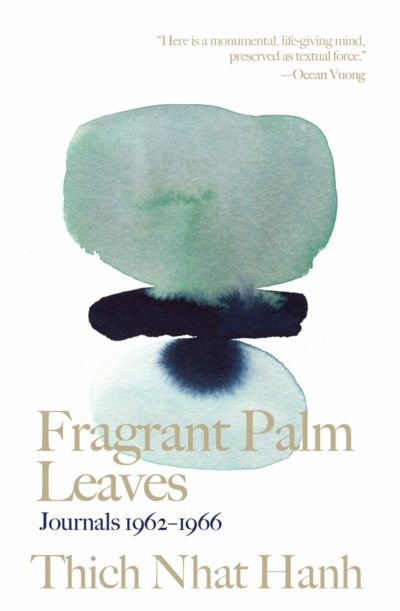
The path leaving the library was strewn with gold and red leaves. Here, where Thầy had walked, we practiced walking meditation. Pausing under a rippling maple tree, we sat in a circle and listened to a passage from Thầy’s memoir, Fragrant Palm Leaves. As the wind scattered golden leaves from swaying branches, beauty carved a path into my memory.
Continuing the path
Our next destination was the Pomona wood cabin at Camp Ockanickon for Boys in Medford, New Jersey. The cabin sits next to a large lake where Thầy had once paddled on a small boat, playing among the water lilies until evening. As it was now Autumn, yellow leaves were falling from the trees onto the surface of the lake. I imagined Thầy as a young monk, sitting contemplatively and reminiscing about his homeland, Phương Bối, and the pain of war in his native country. I recalled reading Fragrant Palm Leaves and tearing up at two verses written as a farewell to Thầy by Ly, a social activist. Even now, reading them again, my emotions well up:
“On the day you return, if the sky is torn asunder,
look for me in the depths of your heart.”1
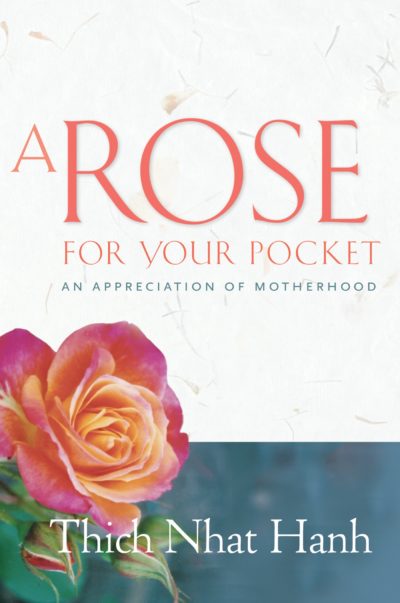
We sat inside the cabin by a wood-burning stove as Thọ, a lay practitioner and close friend of Blue Cliff, collected leaves and dry wood for the fire, which soon filled the room with warmth. It was in this very cabin that Thầy had written a short book titled A Rose for Your Pocket. Later, a musician took a part of the prose and put it to music. Inspired by the surroundings, Sister Noi Nghiêm invited us to sing this song in memory of Thầy. Everyone joined in, and it felt as if Thầy was sitting with us. I felt the urge to sing to offer homage to Thầy and to those present: “A light cloud pillows the mountain peak. Listening to the fragrance of tea carried by the wind, we continue to place trust in the faith that we have. We happily continue our journey …” But I suddenly felt my throat constrict and was unable to continue. Thầy has gone far away. I heard again the faith he gifted us: “Continue the path that Thầy has traveled. Don’t give up, my child …” In my heart I responded, “Yes, I will never give up!”
Being aware is enough
The next day, we continued our trip and visited Union Theological Seminary in New York. We began walking meditation at 306 West 109th Street, the house where Thầy resided before returning to Vietnam in 1964, and we continued to Columbia University. The city was bustling with people. Passing fruit stalls, I tried to put myself in Thầy’s shoes: I imagined buying vegetables or bread alone on these streets. There would have been almost no other Buddhist monks around. I know Thầy confronted internal conflicts and feelings of loneliness in a new environment while also carrying the intense sorrow of knowing war was ravaging his homeland.
My eyes welled up with tears of compassion for that young monk, my teacher, who shouldered such a heavy burden. At first, I quickly wiped away my tears, but then I remembered Thầy telling me, “If you want to cry, just cry. Don’t suppress it. There’s nothing shameful about crying. Being aware that you are crying is enough.” As the sun of awareness shines, light floods in, and I remember that we don’t need to suppress emotions. Being aware that I am crying, how can I continue crying?
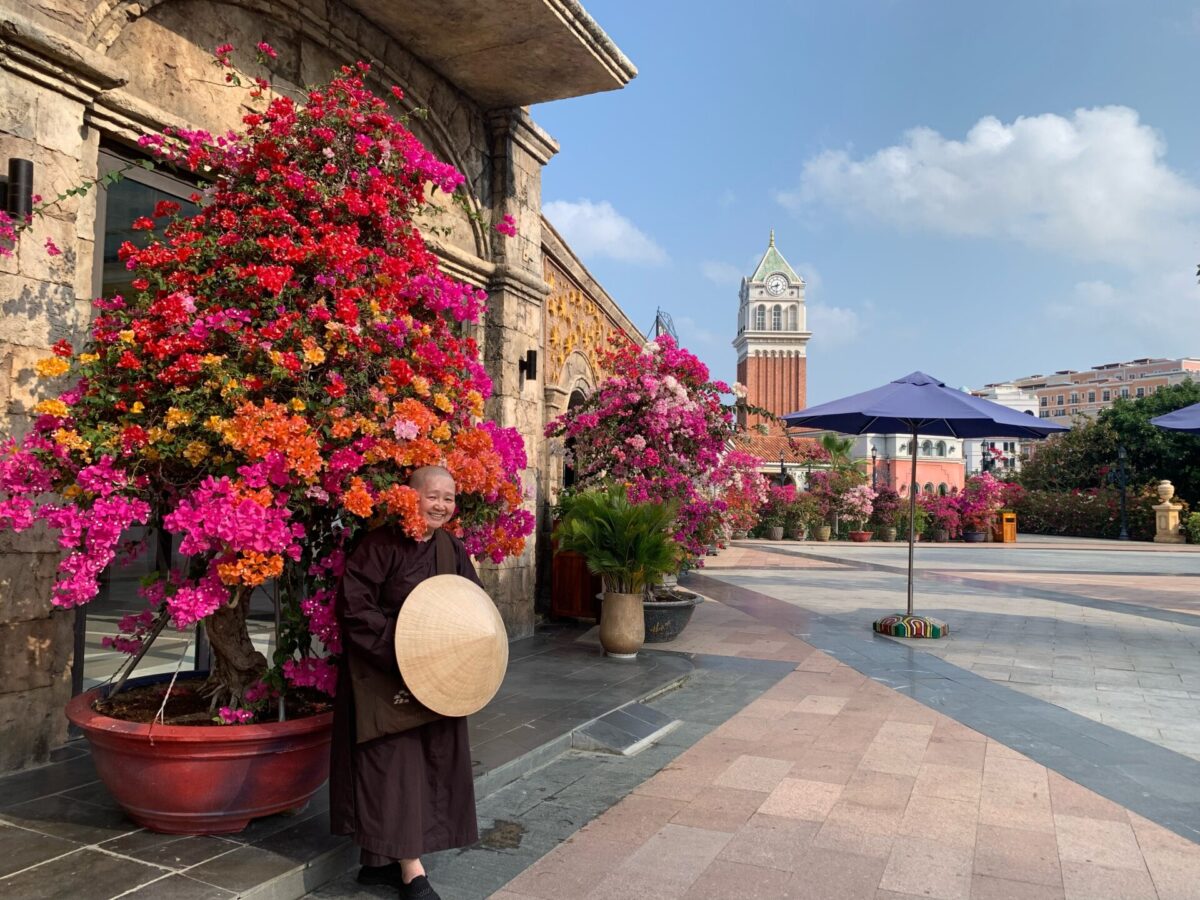
Connecting across time
At Columbia University, we explored the eleventh floor of Butler Library and I marveled at walking past the same bookshelves my teacher had perused. It was here, Thầy wrote, that he had opened a book and found that two people had borrowed it before him, on dates decades apart: “I was able to encounter two people in space but not in time.”2 Now, in Butler Library, I felt that I too was meeting Thầy in the space of my own consciousness, if not in time.
In a small, secluded room of Burke Library, we were shown pictures and documents from the school’s founders and professors. I was surprised to see a picture of Thầy in a glass case alongside other renowned professors. Thầy, at thirty-six, looked very young. When I saw the display of his master’s thesis, The Problem of Knowledge in Vijñānavāda Epistemology,3 I felt pride and admiration for my teacher, a young monk who had eloquently presented the epistemology of Buddhist philosophy to a Western academic environment long before Buddhism was familiar.
A mountain to withstand the storm
Mr. Thanh also wanted to visit Riverside Church, where Thầy gave a talk on September 27, 2001, after the Twin Towers were attacked on 9/11. When we arrived, it was already quite dark. Initially, the church didn’t want to receive us—they had closed. But upon hearing that we were making a documentary about Thầy’s life, an elder in the church told the security guards to let us in. The kind, elderly man welcomed us and led us to the main church, where he had been present when Thầy had addressed over two thousand people.4
I remember September 2001. We were on our way to Kim Sơn Monastery when we heard that the Twin Towers had been attacked. Thầy asked the driver to stop the bus and told us to join our palms and recite the names of the Buddha and bodhisattvas for those who had died. Afterward, US Sanghas seeking an antidote to the fear and aggression growing around them invited Thầy to give a Dharma talk at Riverside Church. Some of us who accompanied Thầy that evening, including me, were very worried—what if a bomb exploded while Thầy was giving his talk!? But Thầy was very calm as he walked into the church with steady steps. Following his lead, each trailing monastic took mindful steps up to the podium. Sitting behind Thầy, I breathed awareness into my fear and accepted that anything could happen to me at that moment. A bomb could go off. But the vow of a bodhisattva is to not be afraid of suffering, to think not only of oneself, to go to the places that need help, and to dare to speak out and call for peace in the world. Our society today, just like in Thầy’s time, needs many bodhisattvas to speak up together for world peace. One bodhisattva is not enough; we need a Sangha, for only a Sangha can create a mountain able to withstand the storms of war. Remembering these teachings, I understood Thầy’s fearlessness in giving the Dharma talk at Riverside Church.
The path of peace continues
The day I asked Thầy to join the monastics, I wanted to become a nun because life at Plum Village was so fun. There was nothing to worry about. Every day, I could do sitting and walking meditation with the Sangha and eat in silence, and every week I could listen to Thầy’s Dharma talk. I didn’t need to look for a job or compete for an important position, nor did I need to think about money. Life was simple and happy. But over time, I saw that the path I was on was not as simple as I thought. I began to have work and responsibilities assigned to me by the Sangha. I became more worried about monastic life, because at that time, Plum Village was not as developed as it is now. I started thinking about how to raise money for Plum Village so we would have enough to live, and I became worried.
I asked Thầy for permission to raise bees to sell honey. Plum Village has up to 1,250 plum trees; every spring they bloom, and bees fill the garden. I had other ideas, too: selling spring rolls at the market in Sainte Foy, for example. Thầy shook his head, looked straight into my eyes, and said very strictly, “Don’t worry, my child. Just keep practicing! If one has virtue, one will not lack for food. Instead of worrying, put Transformation and Healing on your bedside table and read one chapter a day for me.”
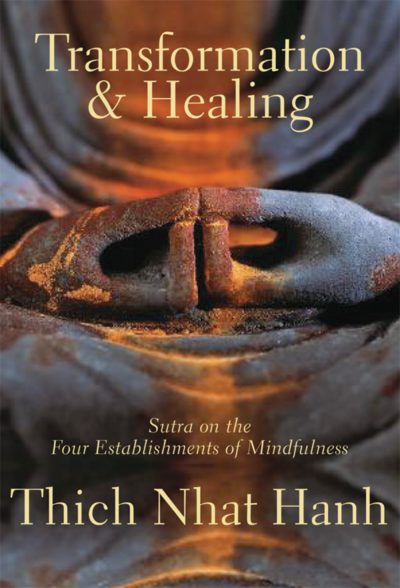
Transformation and Healing, a commentary Thầy had written about the Four Establishments of Mindfulness, is very simple and easy to understand. Reading it, I felt like I had struck gold. A new perspective opened up in front of me: my true homeland, I realized, is right inside me, not somewhere far away.
Previously, when Thầy told me, “Out there, people are suffering a lot. They really need our help, so we should study and practice properly,” I agreed, but my mind was blank. With time, and the opportunity to come into contact with the cultures and diverse lives of many people, I have come to understand: regardless of nationality, race, skin color, location, or class, people cannot avoid suffering in life.
Living in a wealthy country like the United States, I thought there would be less suffering than in poorer countries. But I was wrong. I have been residing at Blue Cliff Monastery for nearly ten years now and the suffering here is as full as the Atlantic Ocean. I know a family whose son committed suicide. I listen to students with wounds from sexual or physical abuse committed by their parents, to people who feel lonely in their lives, and to young people mired in addiction and debauchery. There is also much mental illness in society. What must we do to help our loved ones overcome emotional storms and distress? Isn’t it too late to wait for the storm to come before finding a solution? I see now that the need for mindfulness practice is very strong. I clearly see the reason for my presence and my practice. I am not practicing only to achieve my own personal goal of enlightenment. My existence and practice are to help alleviate pain of all who suffer.
Tonight, the bright moon outside the window at Blue Cliff reminds me of the time I sat with Thầy on a bench, watching the moon. He told me, “Only when we are free can we see the bright moon.” Did Thầy want to tell me that only when I am not busy with family or social matters, only when my heart is not filled with desires, wishes, and sorrows, will I be able to truly be in touch with the bright moon? As Thầy’s parallel verses in the Great Togetherness Meditation Hall of Blue Cliff Monastery say:
The blue water is clear, thousands of rivers have water, thousands of rivers and moons appear. Mountain Cliff is beautiful, every time you look at it, it is brand new.
I would like to say to Thầy, “Dear Respected Thầy, I am very happy. Every day I see our direction clearly and know where I am going. The gratitude I have for my teacher, for the patriarchs, for my spiritual family, for my parents, and for my blood family will never run dry. I know that you are roaming freely, and that you will be in our hearts forever.” Thầy’s peace activism continues in me, and in the Sangha.
November 30, 2023
Chân Hoa Nghiêm
1 Thích Nhất Hạnh, Fragrant Palm Leaves: Journals 1962-1966 (Berkeley: Parallax Press, 1998), p. 51.
2 Thích Nhất Hạnh, Fragrant Palm Leaves: Journals 1962-1966 (Berkeley: Parallax Press, 1998), p. 75.
3 Thích Nhất Hạnh’s thesis is available on Columbia University’s website at https://academiccommons.columbia.edu/doi/10.7916/efz6-7n73.
4 Sister True Dedication and Sư Cô Định Nghiêm, “Thich Nhat Hanh: Extended Biography,” Plum Village. Accessed May 9, 2024. https://plumvillage.org/about/thich-nhat-hanh/biography/thich-nhat-hanh-full-biography
Translated by Sister True Vow. An earlier version of this article was published in the Plum Village Newsletter, no 47, 2024.
